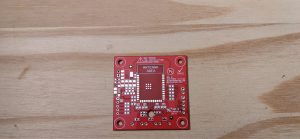What is a Circuit Card Assembly? All You Need to Know
Circuit Card Assembly
The circuit card assembly is an important part of the electronic components that make up the entire device. It helps to ensure that the electronic components function properly and efficiently in a system or circuit. A good quality circuit board assembly can provide a reliable and robust solution for many applications. It can be used in a variety of home appliances and electronic gadgets. It also has several industrial uses.
The main goal of a circuit card assembly is to transform a bare PCB into a functional unit by soldering electrical and electronic components on it. The process consists of four major elements: the substrate, copper, silkscreen and soldermask. Let’s take a closer look at each of these four components to understand what they mean for the circuit board assembly.
A substrate is a flat piece of dielectric material, such as FR-4, that has conductive paths or traces etched on it. These traces are the connections between the various electronic components on a circuit board. The traces are made from metals like copper, and they can be either plated or unplated. There are two different types of CCA: through-hole and surface-mount technology (SMT).
Website design By BotEap.com
What is a Circuit Card Assembly? All You Need to Know
Through-hole components have long pins that are inserted into holes in the PCB and then wave- or reflow-soldered onto the pads on the other side. Surface-mount components are smaller and have short pins that are deposited or picked and placed by machines. The other layer on a circuit board is known as the soldermask, which insulates the copper from any other metals and keeps the solder from sticking to other parts of the board. The final layer on a circuit board is called the silkscreen, which features components in symbolic or textual form so that engineers can better understand the functions of each component.
There are various problems that can arise during the circuit board assembly process, including soldering issues and component placement issues. Soldering issues may occur due to inadequate solder paste application, incorrect temperature settings, or faulty components. These issues can be resolved by reapplying the solder paste, adjusting the temperature settings, or replacing the faulty components. Component placement issues may be caused by misalignment, incorrect orientation, or machine setting. These problems can be corrected by manually repositioning the components or adjusting the machine settings.
In order to guarantee high-quality circuit card assemblies, manufacturers should follow stringent quality control protocols. These protocols will not only safeguard against defects, but also encourage continuous improvements and innovation. A good example of a strong quality control protocol is regular testing, which ensures that the circuit boards work as intended in their application. It is a critical step that can help to reduce the cost and time of assembly.